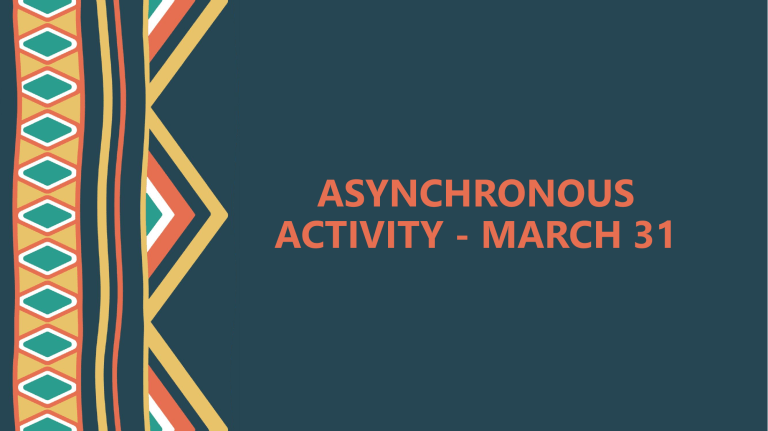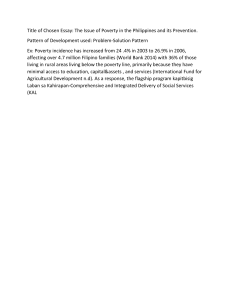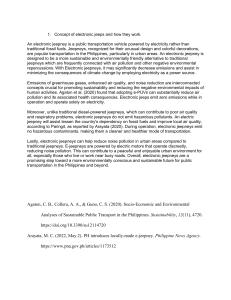
ASYNCHRONOUS ACTIVITY - MARCH 31 School as a Social Organization School as a social organization is build through an individual and social group that has a common goal. It is founded by the society to help students meet their education needs and to conduct educational activities regularly. The school can be managed within the context of its relationships and environment since it is a social organization in and of itself inside of society. School as a Learning Organization A school, as a learning organization, has the ability to alter and adapt frequently to changing contexts and circumstances as its members, both individually and collectively, learn their way to achieving their vision. School Vision and Mission A school's principles and goals are described in its vision statement. They give community members and parents a succinct yet detailed summary of the school's fundamental values. School mission statements, on the other hand, outline the actions the institution is taking right now to realize its goal. School Values The school's values assist in defining the goals it has for itself. The school's goals are highlighted in the values statement, along with the school's qualities and the community's expectations for the pupils they are raising. School Leadership The process of mobilizing and directing the skills and efforts of educators, students, and parents toward accomplishing shared educational goals. School leadership aims to get the best out of teachers and students. It can fall under either transformational or instructional/pedagogical leadership (Day and Sammons, 2014; UNESCO, 2018). For example in Holy Trinity College the students build unity in electing set of officers that is responsible and can hear their voices which results of power of leadership and act of School Culture The fundamental principles, underlying presumptions, expectations, conventions, and values that give a school its identity, shape how that school runs, and have an impact on how administrators, teachers, support staff, and students behave. In the pursuit of fostering and enhancing learning, school culture merits consideration. Change in school culture has always been a part of comprehensive models established for educational reform. What are some social Changes Happened/trending in our country? Modernization – Greatest social change in our country from traditional life to more innovative and technologically advanced way of life style but has a negative impact which is less preservation of our culture and traditions. LTFRB – Demands to phase out Jeepney nationwide and to be replace by more expensive minibuses this is also under modernization. It deems traditional jeepneys unsafe and environmentally damaging this action caused massive affect in the life of our commuters and drivers. What are some Social Challenges happened/trending in our country? Poverty – a number one and never ending challenges happened in our country due to over population lack job opportunities and land ownership poverty can lead to second social challenges of our country which is the lack of education. Lack of access to education - This is caused by a variety of elements, such as poverty, the distance to schools, and an absence of resources in rural regions. Reduced life expectancy and higher rates of illness are all consequences of lack of access to education, along with higher unemployment and poverty rates. Social Media Exposure – Humans spend more time in social media than living in reality which make social media a threat to humanity immorality are now involving because of the negative power hold by it, social media is now an unsafe place for everyone’s mental health. Six Indicators of an Effective School by MacBeath & Boyd (1995) or Sergiovanni (2000) 1 PUPIL – Teachers and students has a good relationship. TEACHER – Produce motivated pupils that is capable and maintain good environment. 2 5 6 3 PARENT – First provider of discipline has a good relationship between parents and teachers. 4 MANAGEMENT – Work towards clear objectives to provide good quality service to students and parents. SUPPORT STAFF – Help provide good classroom environment. BOARD MEMBER, TRUSTEE – Strong leadership responsible in helping students to achieve their greatest potential. Six Forces Affecting Changes in Schools (Sergiovanni, 2000) 1) Bureaucratic Forces • Personalities leadership styles, are rules, mandates, and other requirements intended to provide direct supervision, standardized work process, or standardized outcomes that are used to prescribed change. 2) Personal Forces • Personalities, leadership styles, and interpersonal skills or change agents that could push for changes to happen in school. 3) Market Forces • Competition, incentives, and individual choice that are used to motivate change. 4) Professional Forces • Standards of expertise, codes of conduct, collegiality, felt obligations, and other professional norms intended to build professional community to compel change. 5. Cultural Forces • Shared values, goals, and ideas about pedagogy (method and practice of teaching), relationships and politics intended to build covenantal (agreement or law) community that is used to compel change. 6. Democratic Forces • Democratic social contacts and shared commitments to the common good intended to build a community that is used to compel change


